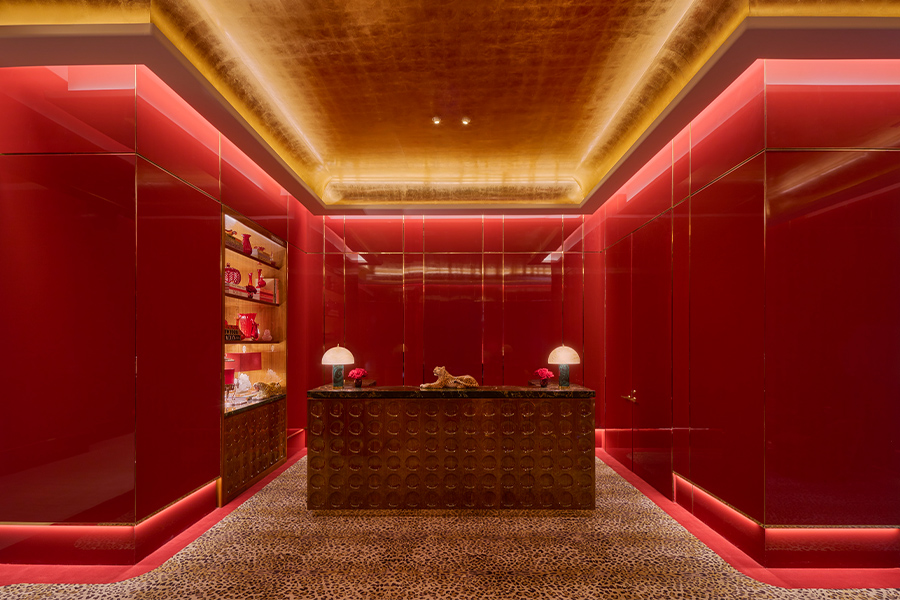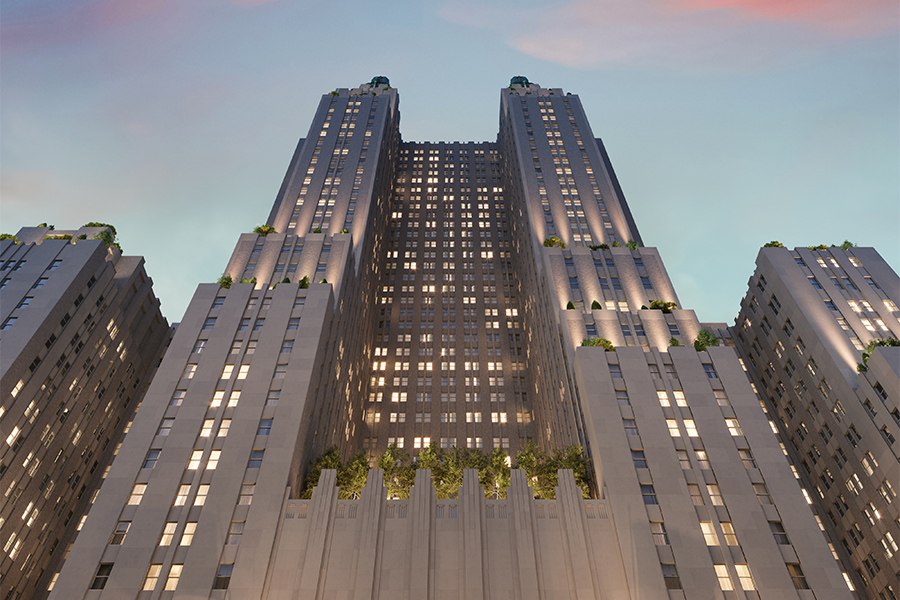Every time Sarah Shepherd walked downtown to her job at the software behemoth Citrix, she was entranced by the sight of Montfort Hall. Largely obscured by overgrowth, the brick-clad Italianate mansion was perched atop a hill in Boylan Heights, the Raleigh, North Carolina neighborhood where she lived with her husband, Jeff, lead designer at video game company Imangi Studios. All these glimpses of the enigmatic abode, “a gorgeous landmark that was withering away,” as she puts it, reinforced Shepherd’s long-brewing entrepreneurial stirrings, ultimately leading the couple to purchase the home and transform it into the intimate Heights House Hotel and events venue.
The 10,000-square-foot, nine-room boutique property—three years in the making—opened this past spring following an overhaul by local firms Maurer Architecture and Greg Paul Builders, as well as Bryan Costello, the designer the Shepherds befriended after frequent visits to the art gallery and home goods shop he ran nearby before he embarked on a career in interior design.
First completed in 1860 by British architect William Percival, the estate was designed for the hedonistic William Montfort Boylan, and expressly “built for entertaining,” Shepherd says. It is also one of Raleigh’s last remaining pre-Civil War structures, and Shepherd was keen to preserve as much of its architectural heritage as possible. “I didn’t want to diminish the beauty of the house,” she adds.
After eight months of efforts to rezone the residence as a commercial venture—although in the 1950s, ’60s, and ’70s, the site was used as a Baptist church—the revamp began. The previous owners, who acquired it in the 1970s, had taken good care of the dwelling, and other than a faulty roof that precipitated excessive water damage (it’s now replaced with a sleek copper one), the design team was impressed by its structural integrity.

Before: Completed in 1860, one of the reasons Heights House Hotel remains structurally sound is because it was built with 18-to-20-inch thick brick walls punctuated with windows fashioned out of sandstone
There were the regal Corinthian columns, for example, stretching up to the rotunda illuminated by the stained-glass window in the roof’s cupola, along with a bevy of intact fireplaces. The grand staircase and plaster walls were restored, pocket doors and wavy window glass were salvaged, and floors composed of “hundreds of nailed-in narrow boards,” as Costello describes them, were re-stained.
Blending Heights House’s abundance of revived original features with fresh additions was important to Costello and the Shepherds. “We wanted to take lessons from the curves, textures, and high ceilings [of the house] and match them in beauty and form with the new,” explains Costello.
Consider the built-in bookshelves found in the library that mimic the fluidity of the windows and moldings, or the pair of ’70s Italian sofas in the drawing room. “They’re slinky and have all the lines the house does. It was about finding an equilibrium with shapes and attitudes,” Costello adds.
There is also an interplay among the materials and furnishings, with Costello mixing the likes of marble and concrete tiles. Antiques such as a chest of drawers that once graced the Waldorf Astoria New York’s Winston Churchill suite, topped with a crystal figure lamp culled from the Shepherd’s family treasures, also meld with a custom buffet in the dining room. At the same time, vintage rugs sourced from around the globe lend an old-fashioned feel, while the dried floral sculptures on display in the upstairs rotunda are decidedly imaginative. Brass lighting fixtures are intentionally modern, forging a thread of continuity.
Of the guestrooms, five are historic, including the honeymoon suite starring a 9-foot-tall, 19th-century French gilt mirror. An extension of the second floor yielded the other four accommodations, and they fittingly have a more contemporary air, pairing black wood furniture with globe lighting.
Rather than simply showcasing their preferences, Costello and the Shepherds wanted to honor the home by working with what they were given. “The cues were already there for us and we worked our personal style into it,” says Costello. “Really, it’s a collaboration between us and the house.”
This article originally appeared in HD’s August 2021 issue.
More from HD:
NoMad London Captures a New York Sensibility
The Redesigned Ritz-Carlton, Los Angeles Enters the Spotlight
5 Hotels Remaking the Washington, DC Skyline











